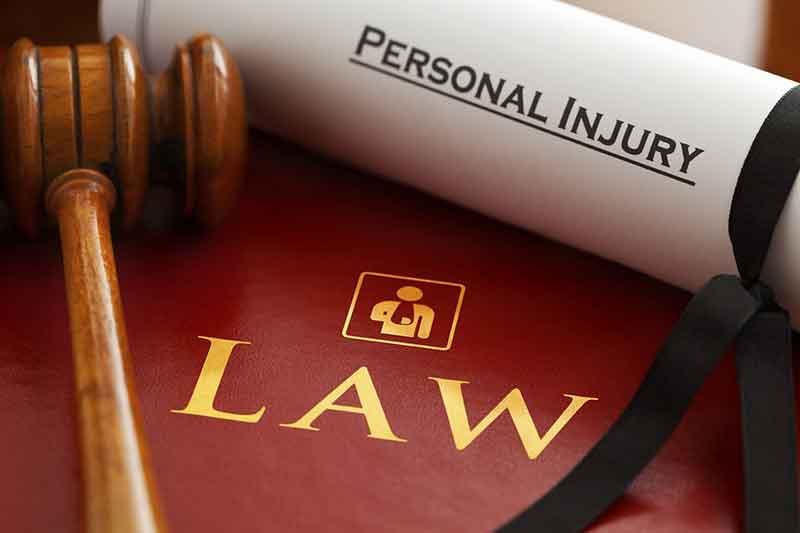 Personal Injury
Personal Injury
How Long Does the Personal Injury Claims Process Take?
Oct 16, 2017 | Read Time: 4 minutesPersonal Injury Claims Process In California Most people involved in a personal injury lawsuit are anxious to close the book on this part of their lives. The plaintiff has medical bills and other expenses piling up. So he may find himself out of work and unable to support his family. Unfortunately, the personal injury claims process can be a lengthy one. It is impossible to predict how long your personal injury case will last. This depends on the individual circumstances of your case. If the defendant acknowledges fault for the facts of the accident, your injuries and offers fair compensation, your case may settle within a few months. If your case involves factual disputes, or either party refuses to entertain reasonable settlement offers, it can take years to obtain a final judgment in your case. Personal Injury Statute of Limitations in California A statute of limitations is a law limiting the amount of time you have to bring a legal action for any given reason. Statutes of limitation vary by state and legal matter. If you unable to settle your claim or fail to file a lawsuit before the statute of limitations passes on your claim, you will be permanently precluded from seeking compensation for your injuries in court. So, a judge will dismissal any lawsuit you file, and you may not be able to recover anything for your injuries. The statute of limitations for a personal injury claim in California is two years. This is how long you have from the date of the accident or injury to make a claim. However, this statute of limitations applies when the claim is against a citizen. Against the government, the statute of limitation shrinks to six months. It is important to seek legal counsel as soon as possible after an accident to determine if there is a governmental claim with a shorter time limit. In addition, sometimes, an injury may not be immediately apparent after an accident. Injuries can take weeks or even months to fully develop. If this is the case, contact an attorney as soon as you are aware of the injury. Understanding the Extent of Your Injuries Understanding what injuries you have and how they happened is crucial. That is why treatment is such an important step in the personal injury claims process. Injuries may take time to develop, and testing isn’t always conclusive. This can draw out this part of the process and even take several months. Learning the extent of your injuries is critical to understanding how much your personal injury claim is worth. We calculate damages on the economic and non-economic losses. You must have suffered these losses as a result of the accident. This includes expected future damages, like ongoing medical costs and reduced earning capacity associated with a permanent or long-term disability. If may take months to years to get a reliable medical prognosis for your injuries. You do not want to settle your claim premature until knowing all of your damages. Gathering Evidence to Prove Your Claim You will need to present a detailed documentation of the accident and your injuries. You can do this a variety of ways. Obtain accident reports, gather witnesses, or even take pictures of the accident scene. The information you collect can help support the facts of the case. In addition, you will need to provide doctor’s opinions and other medical records. This documents the severity of your injuries. As part of their defense, your opponent may also want to collect evidence from their own medical experts. The process of gathering evidence to support (or defend against) a personal injury claim is discovery. Parties have a duty to share any information or evidence used with the other side. Some methods for obtaining information from the other parties in a lawsuit include: Depositions: Attorneys on both sides of the case interview parties and witnesses. Subjects make statements under oath and a court reporter transcribes the process. Interrogatories: Written questions presented to either party by counsel for the opposing side. Requests for Admission: Similar to interrogatories, requests for admission are questions that each side must answer affirmatively or negatively. Attorneys use them to pin down a party’s position on a particular issue. Production of Documents: With the exception of documents protected by attorney-client privilege, parties must provide the opposing counsel with any documents they intend to use in their case. Like every other step in the personal injury claims process, gathering evidence and discovery can take many months. The actual amount of time it takes will depend on the complexity of your case. Negotiating a Settlement for Your Personal Injury Claim Once the plaintiff calculates damages, settlement negotiations can begin. The plaintiff’s attorney will usually send a letter to the defendant or his insurance company demanding a specific amount of damages. The defendant’s attorney or insurance company will typically respond with a counter-offer. It is unusual for either party to accept a first offer or demand. So negotiations could go back and forth this way for quite a while before sides reach an agreement. The parties may agree to attend mediation to try to reach a mutually acceptable solution. Litigating Your Personal Injury Claim About 95% of personal injury claims will be voluntarily settled out of court. For the small number of cases that go to trial, a judge or jury will decide what damages the plaintiff receives. The cases that go to court obviously last longer than the average personal injury claim. Once a trial date is set, prepare to see it rescheduled at least one time maybe twice. It may take at least two years, sometimes longer, from the time of an accident to take a personal injury case to trial. Hire Personal Injury Attorney in Long Beach, California If you or a loved one has been injured due to someone’s negligent behavior, reach out to a personal injury attorney as soon as possible. Michael Beliz, an experienced attorney in Long Beach, CA is eager to assist...
Continue Reading

